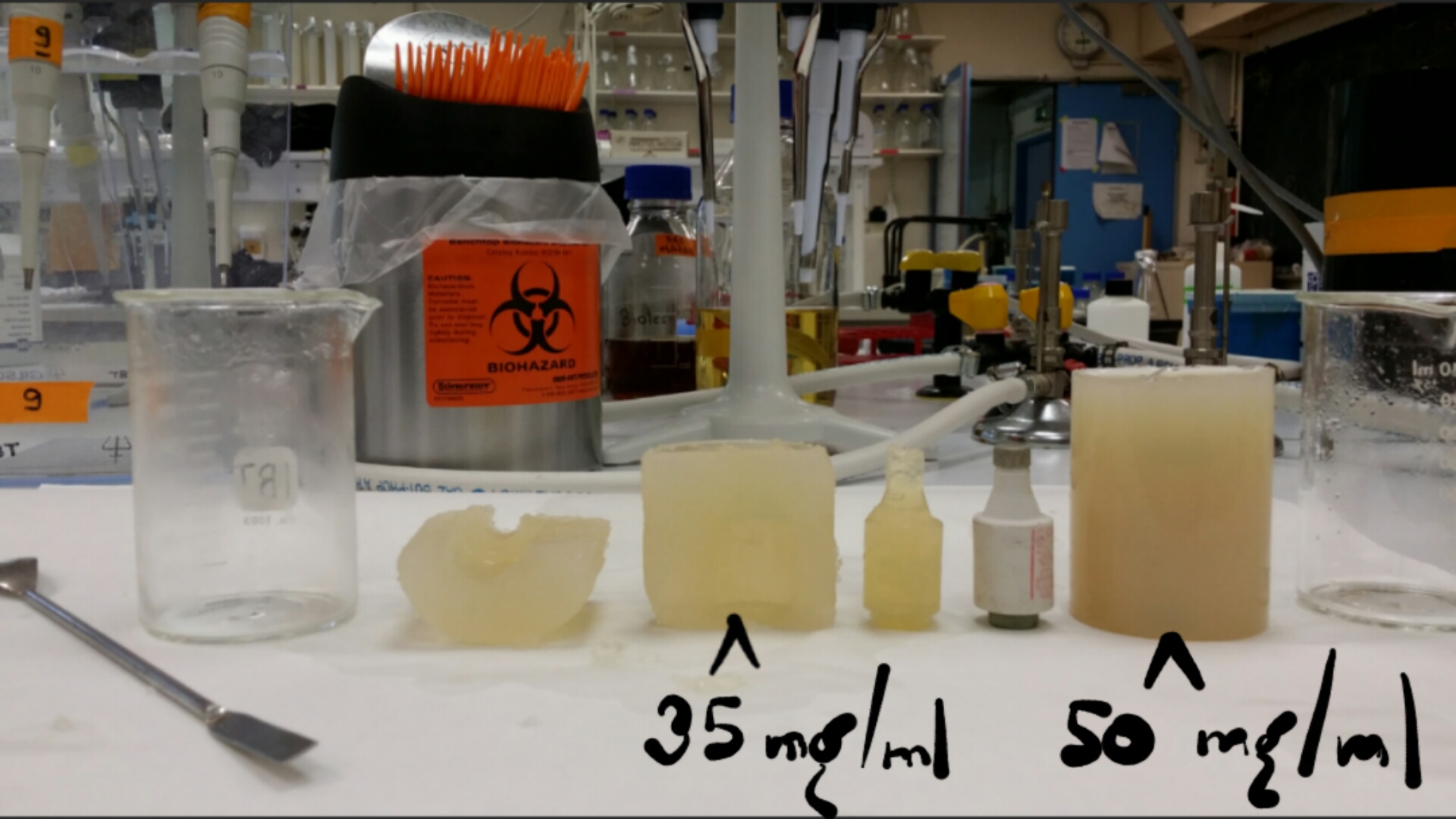Team:Paris Saclay/Notebook/August/7
From 2014.igem.org
Contents |
Thursday 7th August
Lab work
C - Salicylate Inducible Suppressing System
DNA extraction from gel agarose
In progress
D - Lemon Sent
PCR of pCola plasmid (Geranyl Synthase)
by Melanie
we use the same protocol as yesterday but we have done 8 tubes to apply a gradient in the thermocycleur during the third step:
- 57°
- 56.3°
- 55.1°
- 53.3°
- 51°
- 49.3°
- 47.9°
- 47°
PCR protocol: 98° --> 2min
5 PCR cycle:
| time | 10sec | 20sec | 45sec |
|---|---|---|---|
| temperature | 98° | (depending on the tube - see the gradient) | 72° |
25 PCR cycle
| time | 10sec | 20sec | 45sec |
|---|---|---|---|
| temperature | 98° | 72° | 72° |
and last step: 72° during 10min
but we don't have any results
Test the odor of e.coli with pJBEI6409 plasmide
'by melanie' Transformation of competent cells 5mg1655) by electroporation (pJBEI6409) [1] We do some stock
Extraction of the Genomic DNA
by Juliette & Terry
- APRA PJBEI Cl.1
- APRA PJBEI Cl.2
- APRA PJBEI Cl.3
From liquid culture made the 6th August.
Polymerase chain reaction
by Sean & Pierre
for this PCR, five tubes of each of the following Bio-bricks were prepared.
BBa_K517003
| component | volume |
|---|---|
| H2O | 35.5μl |
| Phusion buffer 5X | 10μl |
| dNTPs | 2μl |
| iPS68bis | 1μl |
| iPS69 | 1μl |
| DNA | 1μl |
| Phusion enzyme | 0.5μl |
BBa_K762100
| component | volume |
|---|---|
| H2O | 35.5μl |
| Phusion buffer 5X | 10μl |
| dNTPs | 2μl |
| iPS66 | 1μl |
| iPS67 | 1μl |
| DNA | 1μl |
| Phusion enzyme | 0.5μl |
Tubes were placed in PCR machine with the following parameters.
| Cycle step | Temperature | Time | Cycle |
|---|---|---|---|
|
Initial denaturation |
98°C |
1 min |
1 |
| Denaturation | 98°C | 15 s | 25 - 30 |
| Annealing | 52°C | 25 s | 25 - 30 |
| Extension | 72°C | 45 s | 25-30 |
| Final extension | 72°C | 10 min | 1 |
| Final extension | 8°C | hold | 1 |
Human Pratices
Art & Design
by Terry
Our lemon will be made of agar gel. We first thought of buying silicone mold. But I'll try to make the mold only with agar, cheaper than silicone.
First attempt : I put about 100ml of hot liquid high density agar ( 35mg/ml ) in a becher and then immerged a test piece to mold. I let the whole thing cool down in a refrigerator for 2 hours. Then, I unmold the test piece by cutting accurately around the mold. The mold is placed back in the becher ( without the test piece ), pierced delicately to the cavity and filled up with regular liquid agar ( 20mg/ml ). Cooled down again in a refrigerator for 2 hours.
BEWARE : The regular agar ( 20mg/ml )is heated to make it liquid but you want to put it in the mold. Too hot, and you will melt the mold. Too cold, and your agar will turn back solid.
Second attempt : Same protocol than the first attempt, but with higher density agar ( 50mg/ml ).
Result : Opening of the first mold, the second one is kept in the refrigerator for tomorow.
Members present:
- Instructors and advisors: Alice.
- Students: Eugene, Fabio, Hoang Vu, Juliette, Melanie, Pierre, Romain, Sean and Terry.
 "
"





